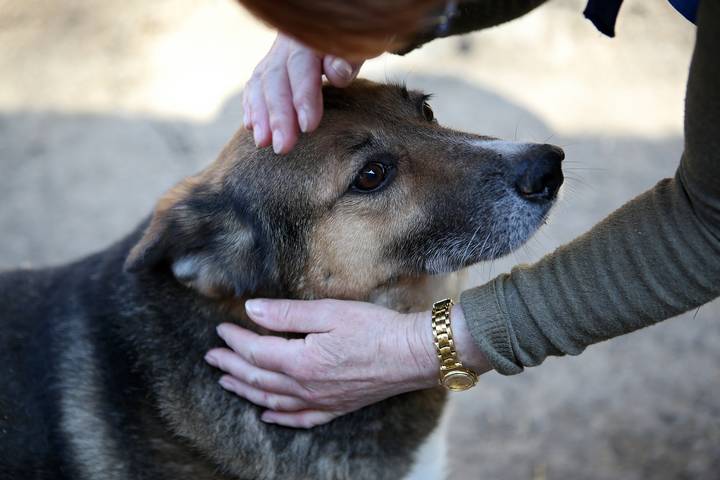Most of the time, our four-legged friends are bundles of energy, curiosity, and enthusiasm. However, there are times when they might display signs of disorientation, leaving us wondering what’s wrong. Understanding the possible reasons behind their symptoms is crucial if we are going to ensure their well-being.
The following are the most common reasons for disorientation in dogs and what we need to do as pet owners when it occurs.
Symptoms of Disorientation

A disoriented dog might appear confused or unsure of their surroundings. You may notice your pup exhibiting unsteady movements, bumping into objects, and struggling to navigate familiar places. They might seem distant, unable to recognize familiar people or respond to commands.
Recognizing these signs promptly is vital to determine the underlying cause. You should seek the appropriate vet urgent care immediately.
Illness or Infection

Infections, especially ear infections, can cause disorientation in dogs. Inflammation and fluid buildup disrupt the vestibular system, leading to symptoms like stumbling, tilting the head, and unsteady movements. The immune response triggered by some infections can lead to inflammation in the brain.
This inflammation can affect cognitive functions, confusion, altered spatial awareness, and difficulty recognizing familiar surroundings or individuals. Regular check-ups and prompt attention to health concerns are essential. Your vet can diagnose and treat any medical issues to help your dog regain balance.
Aging and Cognitive Decline

As dogs age, cognitive decline can lead to disorientation. Like dementia in humans, dogs can experience progressive changes in the brain’s structure and function. Dogs experiencing cognitive decline might appear lost, forget familiar routes or routines, and exhibit confusion in everyday environments.
Behavioural changes like restlessness or aimless wandering can also accompany disorientation. Providing a supportive environment, mental stimulation, and veterinary care can help manage the impact of aging-related cognitive decline.
Stress and Anxiety

Environmental changes, separation anxiety, or unfamiliar situations can cause stress and anxiety in dogs. Stress and anxiety can lead to disorientation in dogs by triggering a cascade of physiological responses. Elevated stress hormones can impact your pup’s cognitive functions.
Acute stress might cause temporary disorientation, manifesting as confusion and difficulty focusing. Chronic anxiety could lead to more severe disorientation, as prolonged exposure to stress hormones can alter brain structure and impair memory. In unfamiliar or overwhelming situations, dogs may exhibit symptoms such as panting, pacing, and difficulty following commands.
Create a safe and consistent environment, offer comforting routines, and consider positive reinforcement training to help ease anxiety. You can consult a professional dog trainer for guidance if you need additional advice.
Toxic Substances

Common toxic substances that can cause disorientation in dogs include chocolate, caffeine, xylitol, and certain plants and mushrooms. The chemicals found in these and other poisonous substances can confuse, alter perceptions, and impair coordination.
Toxic substances can lead to symptoms like vomiting, diarrhea, and seizures, contributing to disorientation. The severity and type of disorientation can vary based on the toxin ingested. Swift veterinary intervention is crucial, as prompt treatment can mitigate the toxic effects.
Vision Impairment

Vision impairment can cause disorientation in dogs simply because their ability to perceive and navigate their environment has been disrupted. Reduced or blurred vision can lead to misjudging distances, stumbling, and difficulty recognizing familiar landmarks or people.
Due to compromised visual input, dogs may become hesitant or anxious in new situations. Sudden changes in lighting conditions can also startle them. If your dog has problems with their eyesight, regular veterinary check-ups, a consistent environment, and providing auditory and tactile cues can help minimize the impact of the impairment.
Low Blood Sugar

Glucose is vital for normal brain function, and reduced levels can lead to confusion, weakness, and altered behaviour. In diabetic dogs, an overdose of insulin or inadequate food intake can trigger hypoglycemia. Symptoms include disorientation, trembling, discoordination, and even seizures.
Rapid drops in blood sugar can cause sudden disorientation, where a dog might struggle to respond to commands or recognize surroundings. Swift treatment involves providing a source of sugar, like honey, and seeking veterinary care to address the underlying cause and prevent further disorientation episodes.
Dehydration

Dehydrated dogs might exhibit lethargy, sunken eyes, and dry gums. As dehydration progresses, cognitive functions suffer, leading to confusion and disorientation. Dogs may struggle to process sensory information, recognize familiar environments, or respond to cues. If you see the signs of dehydration in your dog, you must act quickly. Give them small amounts of water with electrolytes to rehydrate them. If they refuse to drink, call your vet right away.
Disorientation in dogs can be caused by various factors, ranging from medical issues to emotional stress. As responsible pet owners, we must identify the potential reasons behind their confusion and take appropriate measures to help them recover. Always consult a veterinarian when unsure what is causing your dog’s health issues.

